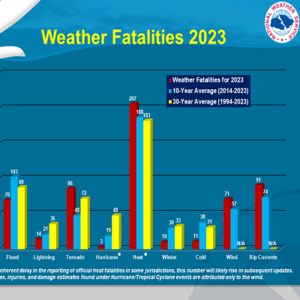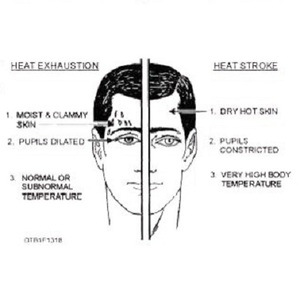

Beat The Heat
Tornadoes, hurricanes, floods, and lightning are often the types of deadly severe weather that make headlines. Surprisingly, from 2014-2023, excessive heat caused more fatalities per year, on average, than any of these aforementioned types of hazardous weather.
Heat becomes dangerous when the temperature and/or heat index is high enough to warrant a Heat Advisory or an Excessive Heat Warning from the National Weather Service. The heat index is the apparent temperature, or how hot it “feels” when humidity is factored in. While there is some variability for different parts of the country, most NWS offices will issue a Heat Advisory when the heat index will be at least 105°F for less than 3 hours per day or if nighttime low temperatures don't dip below 80°F for two consecutive days. If the heat index stays above 105°F for more than 3 hours on two consecutive days, or if it reaches 115°F for any length of time, then an Excessive Heat Warning will be issued.
Car interiors are especially dangerous, as far as heat-related fatalities are concerned, because it doesn't have to be very hot outside the car for temperatures to reach life-threatening levels inside. In an alarming 2005 study by the American Academy of Pediatrics, even at outside temperatures of only 72°F on a bright, sunny day, in-car temperatures can reach 117°F within 60 minutes, with 80% of the temperature rise occurring in the first 30 minutes. This same study also found that “cracking” a window open an inch or two made little difference to the heat rise within the car. The bottom line is, never leave a child unattended in a parked car. The same advice applies for pets, as well.
Heat exhaustion and heat stroke are the two major types of heat-related illnesses. The main differences between someone suffering heat exhaustion versus a more serious heat stroke are that a person suffering a heat stroke will sweat very little, and their skin will feel hot to the touch. On the other hand, people experiencing heat exhaustion will have skin that feels moist and clammy, and their body temperature will still be relatively close to normal. If heat stroke is suspected and/or a person's body temperature rises above 103°F, it should always be treated as a medical emergency by immediately calling 911, or by taking the victim to a hospital.








